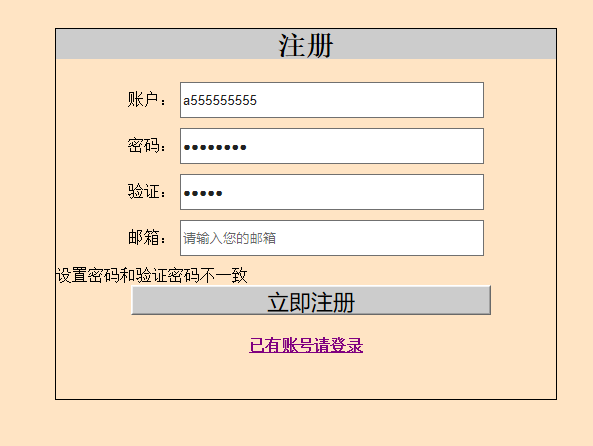注册页面的编写取决于你的具体需求和使用的技术栈。下面是一个简单的注册页面的基本结构和内容示例,使用HTML和CSS编写。

<!DOCTYPE html>
<html>
<head>
<title>注册页面</title>
<style>
body {
font-family: Arial, sans-serif;
margin: 0;
padding: 20px;
}
.container {
max-width: 400px;
margin: 0 auto;
padding: 20px;
background-color: #f4f4f4;
border-radius: 5px;
}
h2 {
text-align: center;
}
.form-group {
margin-bottom: 20px;
}
label {
display: block;
margin-bottom: 5px;
}
input[type="text"],
input[type="email"],
input[type="password"] {
width: 100%;
padding: 10px;
border-radius: 5px;
border: 1px solid #ccc;
}
input[type="submit"] {
background-color: #4CAF50;
color: white;
padding: 10px 20px;
border: none;
border-radius: 5px;
cursor: pointer;
}
</style>
</head>
<body>
<div class="container">
<h2>注册新账户</h2>
<form>
<div class="form-group">
<label for="username">用户名:</label>
<input type="text" id="username" name="username" required>
</div>
<div class="form-group">
<label for="email">邮箱:</label>
<input type="email" id="email" name="email" required>
</div>
<div class="form-group">
<label for="password">密码:</label>
<input type="password" id="password" name="password" required>
</div>
<div class="form-group">
<input type="submit" value="注册">
</div>
</form>
</div>
</body>
</html>这是一个非常基础的注册页面示例,包含了用户名、邮箱和密码的输入字段以及一个注册按钮,你可以根据你的需求进行修改和扩展,例如添加验证码、滑块验证、忘记密码链接等,你还需要在后端进行相应处理,以接收并验证前端提交的数据,并将其存储到数据库中,这通常涉及到使用一种后端开发语言和数据库技术(如Node.js、Python Django、MySQL等)。






